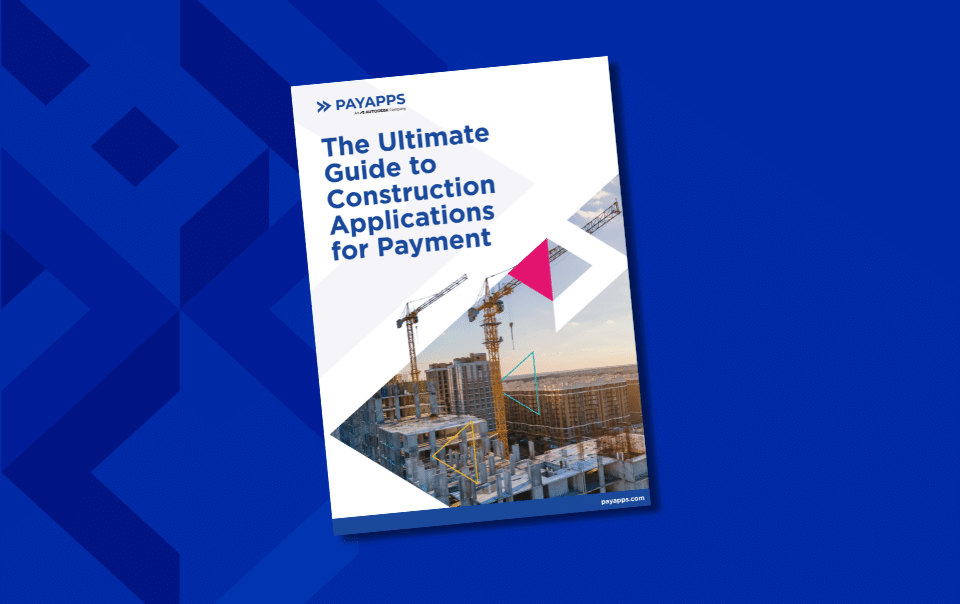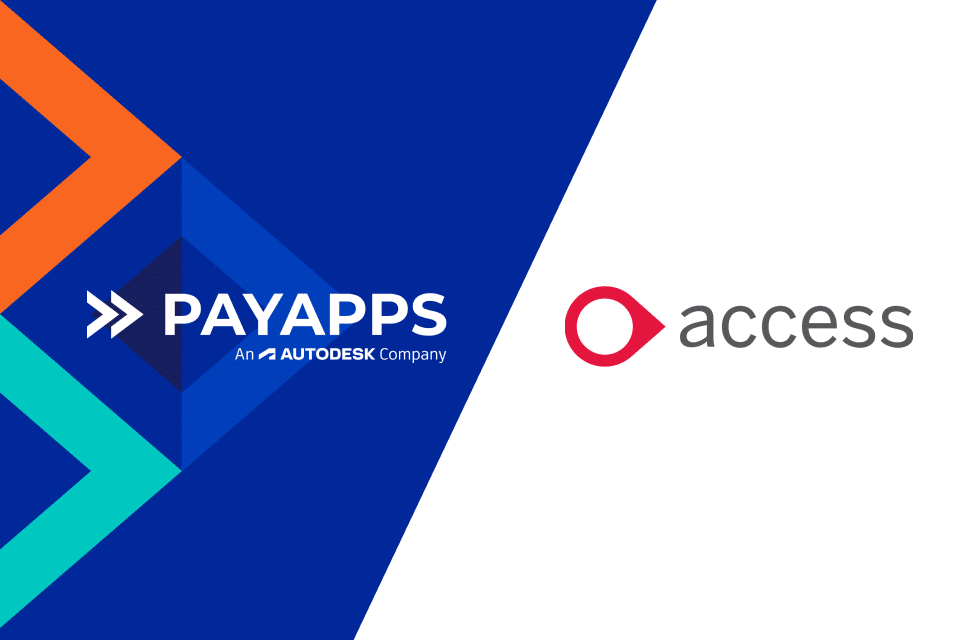Applications for payment in the construction industry can be tricky for both contractors and subcontractors. The process has typically relied on tracking complex details through lengthy manual processes, meaning it can be challenging to follow the stage of an application.
Additionally, managing contract compliance can present another set of challenges for payers and payees. The good news is that this process doesn’t have to be a burden when armed with the correct information.
So, if you find yourself submitting or managing construction payment applications, this blog post and the accompanying eGuide available by completing the form below explores everything you need to know about managing applications for payment in construction projects.

What Is an Application for Payment?
Due to the size and complexity of construction projects, most standard forms of construction contracts expressly provide for an ‘application for payment’ from the payee.
But, what does this mean?
An application for payment refers to a request for interim payment, or complete payment, by a contractor or a subcontractor in the construction industry. In simple terms, an individual or organisation brings documents and evidence together – in line with the contract – before asking for payment on the work completed to date.
Once the project has reached a pre-agreed time interval milestone, the payment application can then be issued for the money due. An important note is that an application’s validity is only as good as the contract that covers it, so any agreement should include contractor payment terms along with an appropriate payment schedule.
How Are Applications for Payment used in the construction industry?
Working with a construction payment schedule means interim payment applications can offer remuneration to contractors and subcontractors to assist with cash flow until the job is complete. These payments may be at monthly intervals or specific stages of the agreed building work.
While most construction industry contracts will include varying agreement terms, the types of contract are usually split into the two following categories:
- Standard Form Contracts, i.e. those produced by recognised industry bodies, e.g. JCT
- Non-standard or bespoke forms created for a specific project
Regardless of the contract type, any contracts you sign should feature payment schedules and outline the documents that need to be included in payment applications.
What’s the difference between an invoice and an Application for Payment?
For most industries, invoicing is simple. We probably don’t need to explain to you how that process works but in the construction industry, payment processes usually differ from the traditional approach.
An invoice usually deals with VAT collection on goods and services provided to a purchaser or client under the VAT regulations. An invoice does not deal with contractual entitlements to payments or valuation.
However, there is no reason why an invoice may not also qualify as an application for payment alongside accounting for VAT. For this to happen, it must comply with the contract requirements, alongside meeting the Construction Act / Construction Contracts Act and, in England and Wales, the Scheme for Construction Contracts [The Scheme].
Payment applications are more complex than a simple invoice, requiring multiple pieces of documentation to prove the legitimacy and validity behind the request for payment.
Let’s examine the items which typically need to be included with your application.
What should an Application for Payment include?
For an application to be valid, it must be issued within the timeframe outlined in the requirements of the particular contract. It should be clear to the recipient that it is a demand for money and that action is required in respect of it.
The payment application should also use the language of the agreement. For example, if the contract refers to an ‘Interim Payment Application’, then use the same title to ensure the payer is in no doubt what you’re submitting.
Additionally, your application should also contain the following, as a minimum:
- The original total contract value amount for the entire project.
- The total financial value of all work completed to date, along with any materials stored on/off-site.
- Any amounts retained.
- The total amount earned to date, against the total amount received to date.
- The amount of money that’s currently due.
- The remaining balance left to complete the project.
What further information or documentation should be included in an Application for Payment?
When it comes to submitting additional evidence, here is a list of documentation and information that you should include:
- Schedule of rates – covers all the work items for the project, matched against the value or cost for that item.
- Variations – show any changes to the project, materials, schedule, work requirements, etc.
- Visual documentation – proving the work you are applying for payment on is complete or that you are storing already-purchased materials.
- Supplier invoices – for materials supplied in this interim payment period but yet to be paid.
- Receipts – as above, for materials you have purchased in the interim payment time period but for which you have already paid.
- Compliance documents – to provide evidence of signed subcontract order, VAT registration, and valid insurances etc.
How to time Your Application for Payment submissions
Given the detail required, most parties in the construction industry tend to submit or receive payment applications monthly, but each application is unique to each project and current status.
This fact alone determines the trend toward monthly submissions. But you should always be guided by the terms of your contract, which may stipulate more exact timing for submitting your application for payment.
Common Application for Payment mistakes you can avoid
Following this guide should keep you on the right track, but, if you want to maintain relationships while avoiding delays or cashflow issues, it’s certainly worth avoiding these common mistakes:
- Not sending applications for payment on time.
- Failing to follow up on submissions – sometimes documentation gets misplaced, so follow up with a phone call or email, or look up the real-time status of your application in an app like Payapps.
- Failing to comply with the ‘Construction Act’ (UK) or Construction Contracts Act (Ireland)
- Not including all information within your application – ensure all variations (sometimes called change orders) and supporting information is included.
- Skipping the evidence of performed work – the visual documentation is an integral part of an application for a payment bundle in terms of evidence.
- Not ensuring all compliance information, like insurance, are current and shared with the paying party.
Solutions for managing Applications for Payment
As you’ll most likely be able to tell, the construction payment process can be tricky to stay on top of. Whilst this guide will help, there are solutions to making the whole process far simpler.
Payapps is a simple, intuitive and easy-to-use online software solution that helps you manage the entire application for payment process up and down the construction supply chain.
Whether you’re submitting or approving and certifying applications for payment, Payapps empowers you to prepare, submit and track your applications for payment with much greater ease versus a manual process.





